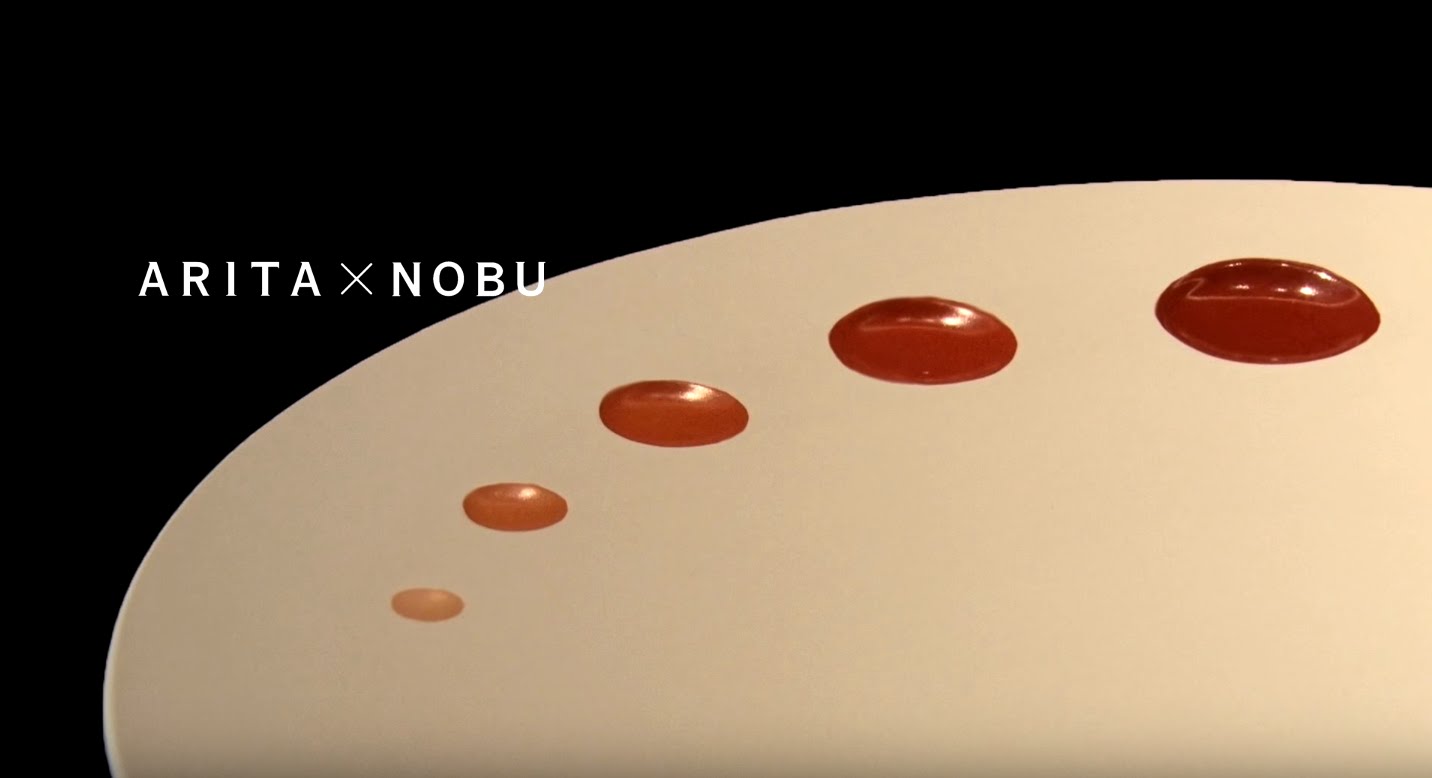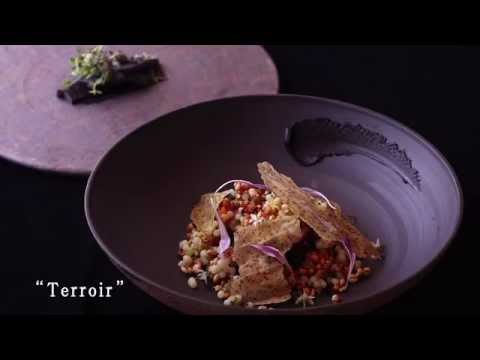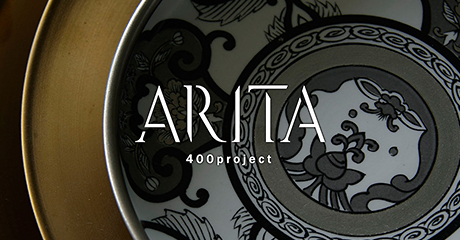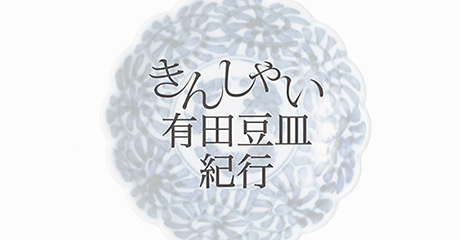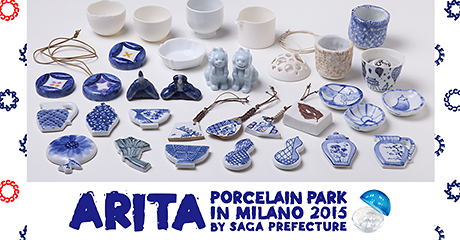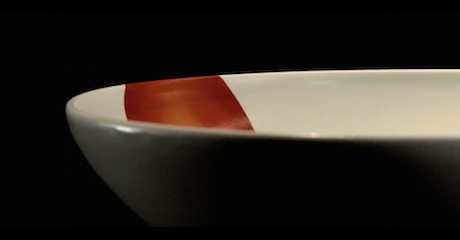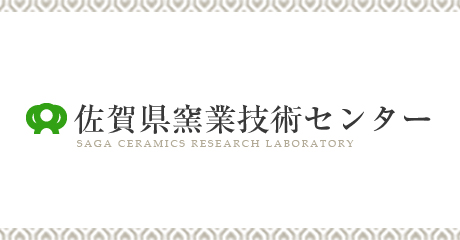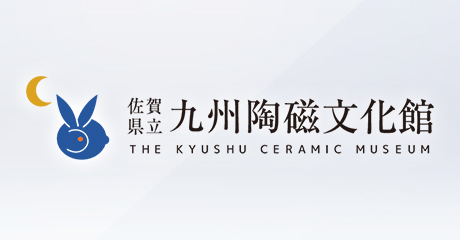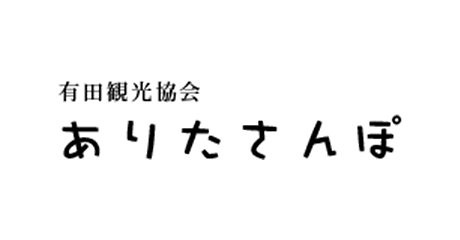Ko-Imari, Kakiemon, and Iro-Nabeshima: The beauty of the Arita porcelain styles
The food culture of Japan so proudly proclaimed to the world has long been supported by a rich ceramic culture, and artistic and functional Arita ware has made a great contribution to the development and popularity of Japanese cuisine.
This section examines the beauty of the different styles characterizing Arita ware. There are various approaches concerning how to classify them, all the more so because Arita porcelain has always taken pride in its unparalleled diversity; however, the following limits itself to just four: Shoki-Imari, Kakiemon, Iro-Nabeshima, and Ko-Imari Kinrande.*1
Shoki-Imari refers to early products fired at the start of porcelain production in Arita and date from the 1610s to around 1650, and they are characterized by the sometsuke (blue-and-white) style; on a white ground with a tinge of blue, such living things as flowers and birds are painted only in blue. The namagake technique, where ceramics are decorated before bisque firing, was applied, and the style has the hallmark of a curved and round feel with mainly simple designs and patterns.
Because of its likeable designs, ceramics for daily use imitating Shoki-Imari were continuously produced in large numbers even after this period.*2
For the next type Kakiemon as well, there are genuine Kakiemon fired at the Kakiemon Kiln and imitations in the Kakiemon style. This style is characterized by overglaze enamel painting called aka-e in those days, in which vivid polychromy such as red, blue, green, and yellow, was applied to the creamy white base known as nigoshide. Since Kakiemon designs have a distinctive composition with plenty of blank white space, it is described as “the beauty of space.” Its designs incorporate features of Yamato-e paintings (traditional paintings of the late Heian and Kamakura periods) with their themes of nature, and the vividness of Kakiemon is considered as the apex of the Japanese sense of beauty, always fascinating devotees at home and abroad. A good many articles in the Kakiemon style were produced from the 1650s to 1690s, and in the 18th century, many imitations were made in European kilns including the German Meissen Kiln.

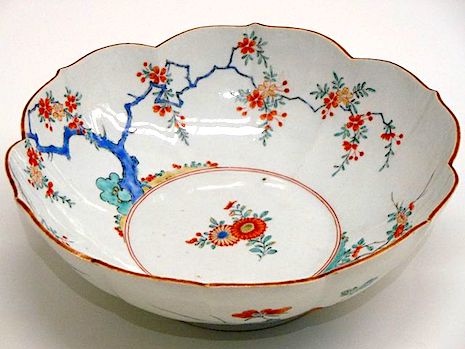
Alongside Kakiemon, Iro-Nabeshima produced in the domain kiln located at Okawa-Uchiyama in Imari, is ranked at the pinnacle of Arita ware.
“The Nabeshima pictorial designs use only three enamels, red, yellow, and green on a sometsuke background; because the coloration is always technically perfect, the spontaneous beauty arising from imperfect coloration is never found, and it is exactly because of this fact that any risk of the style falling into decadence was weakened. Consequently, the Nabeshima style is filled with a simple clear pure beauty to the tiniest detail.
In terms of the four seasons, its atmosphere always maintains a spring feeling, and the Nabeshima porcelain has no feeling of the different charms found in summer, autumn, and winter. Its mood is persistently elegant, graceful and buoyant. (…) Even though an indescribable number of designs have been created, such designs have always been refined into the unique Nabeshima style by a strong-minded enthusiasm for decoration that is consistently without equal, and always finished in an unparalleled and distinctive world of beauty.”*3
The transcendent techniques highly praised by this researcher on the history of ceramics and the tea ceremony could be described as the beauty of style of a rare kind, which was achieved exactly because of it being an official domain kiln. Side by side with Kakiemon, Iro-Nabeshima with its focus on the stylishness of the techniques in the 17th century is rightly proud of its beauty representing Arita.
Next, around the end of the 17th century Ko-Imari Kinrande production began with its luxurious and splendid style using overglaze gold. Those ceramics in this style also include imitations modeling kinrande (porcelain with overglaze gold) produced in the later Ming Dynasty in China. This style, showing richly exotic tastes, projects a worldview at the opposite extreme to the Japanese aesthetic sense of wabi-sabi (elegant and quiet simplicity).
Apart from the Kakiemon and Nabeshima styles, ceramics produced in Arita up to early-modern times are generally known as Ko-Imari. According to the Arita Town History: Ceramics, from the 1670s to 1750s or so, domestic demand of ceramics considerably increased, and their use spread down to ordinary folk, which naturally promoted mass production of katamono, ceramics made by using molds, with a consequent shoddy shaping and lack of style. Moreover, from the 1760s to 1820s, Chinese-style taste previously found in earlier designs was no longer seen, and Ko-Imari with Japanese-style designs came to take up the majority of the market, and was blending into the everyday life of the common people.*4
In its long history, Arita porcelain has developed itself while incorporating a truly broad range of sense of value, such as pristine and practical beauty and dazzling decoration.
- *1 Toshiro Kuga, Yukimasa Tomioka (supervising editors) “Illustrated History of Karatsu, Imari, and Arita” 2011, Kyodo Shuppansha
- *2 “Shoki Imari” and “Shoki Imari Style,” “Izumiyama Journal,” blog of History and Folklore Museum of ARITA, November 14, 2012, “The Birth of Japanese Porcelain: Arita Ceramics 400th Anniversary”
- *3 Yoshiaki Yabe (researcher on the history of ceramics and the tea ceremony, curator of the ‘Living National Treasures’ Museum) “Imari Porcelain That Enticed the World” 2000, Kadokawa Corporation
- *4 Arita Town History Compilation Committee, “Arita Town History: Ceramics” 1987, Arita Town





